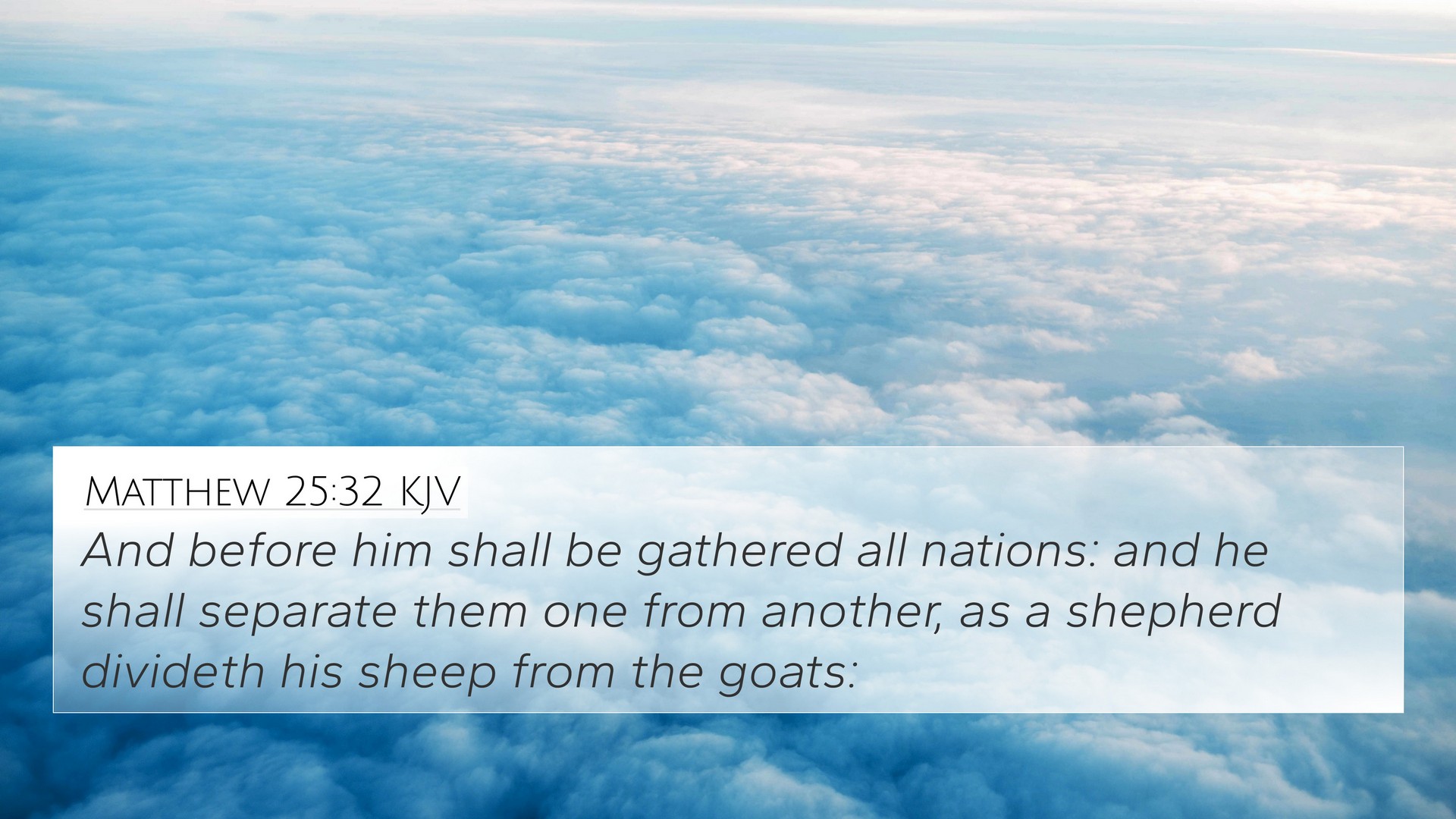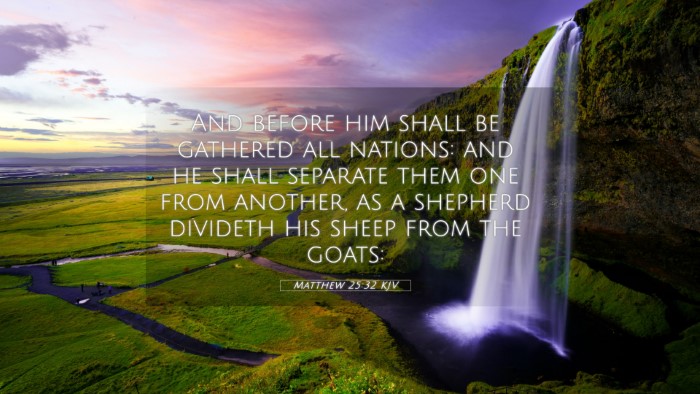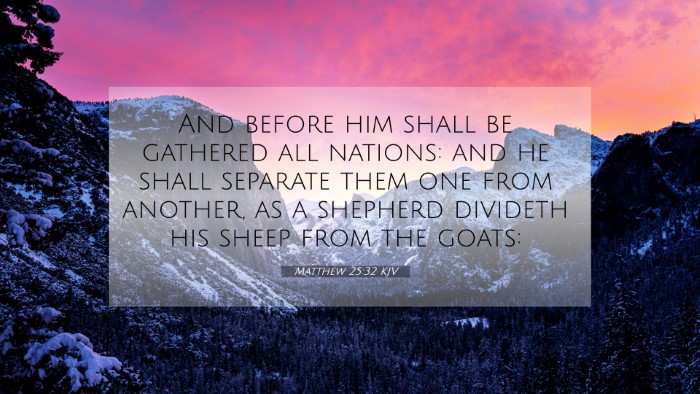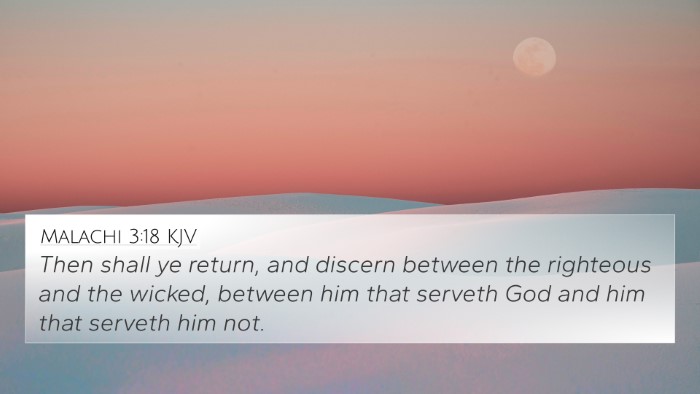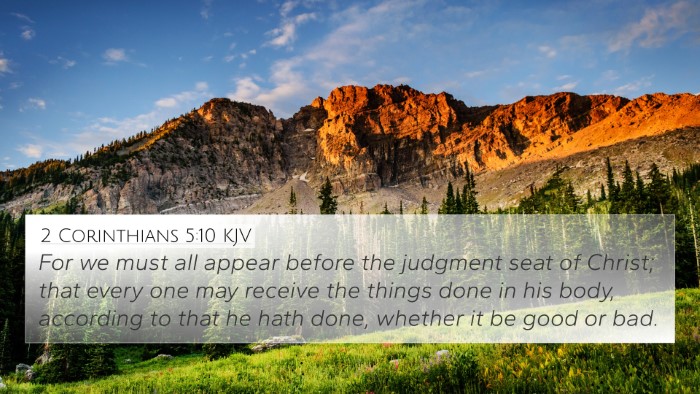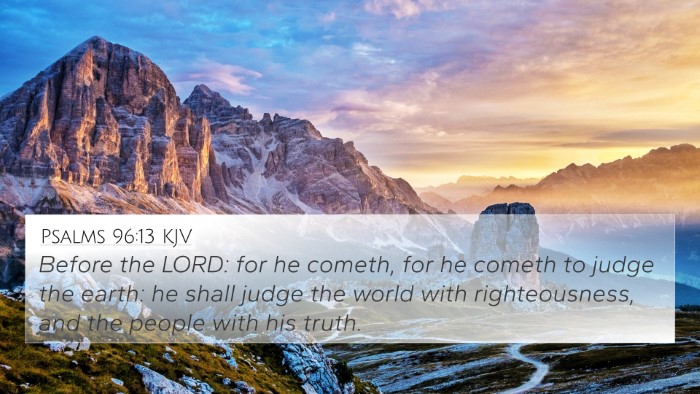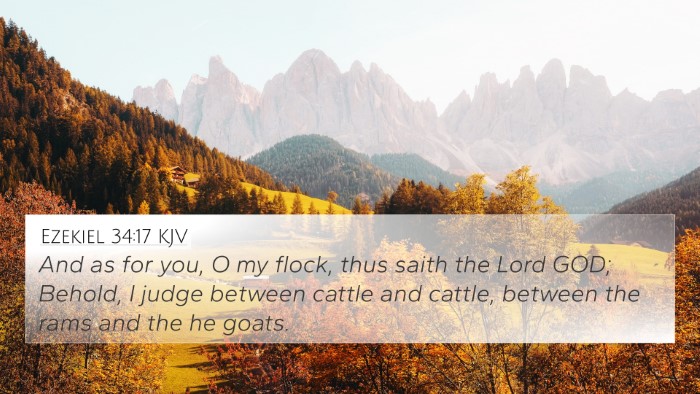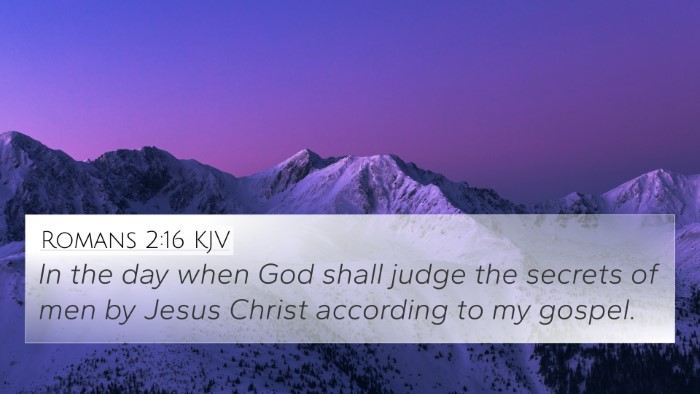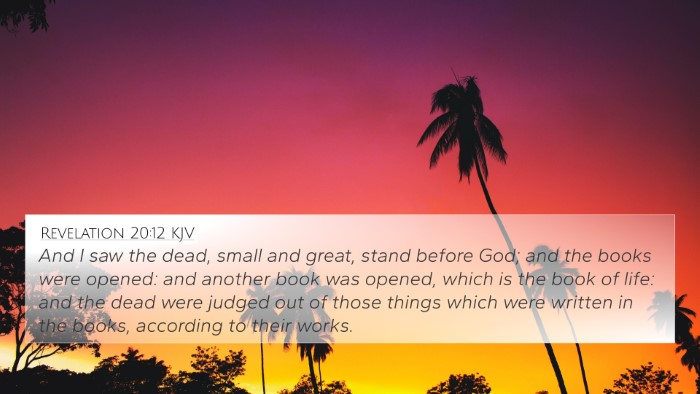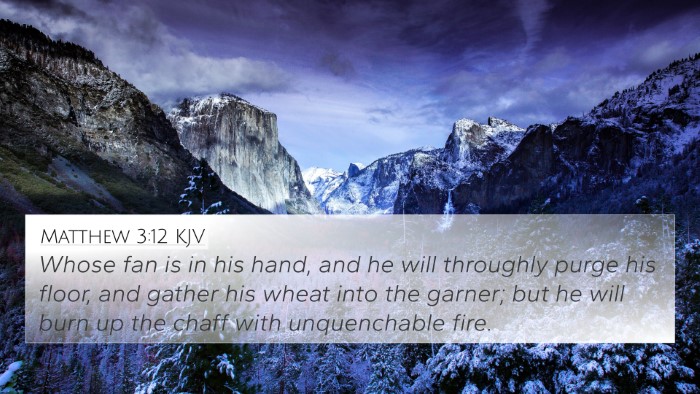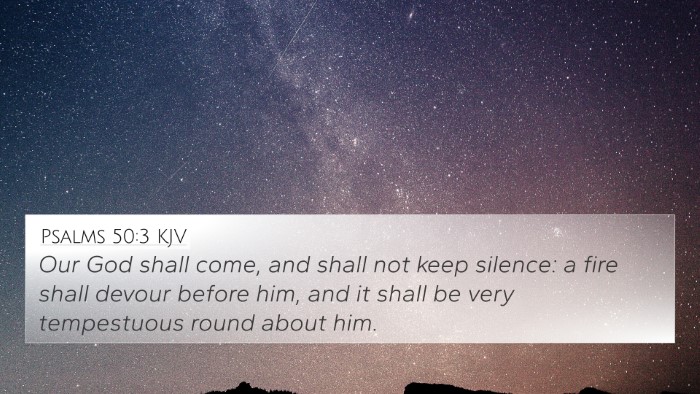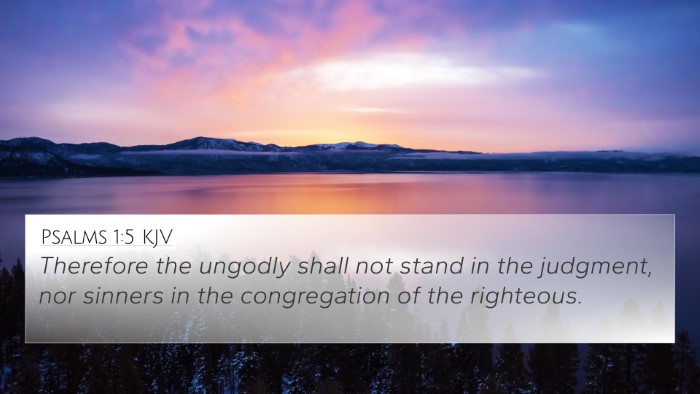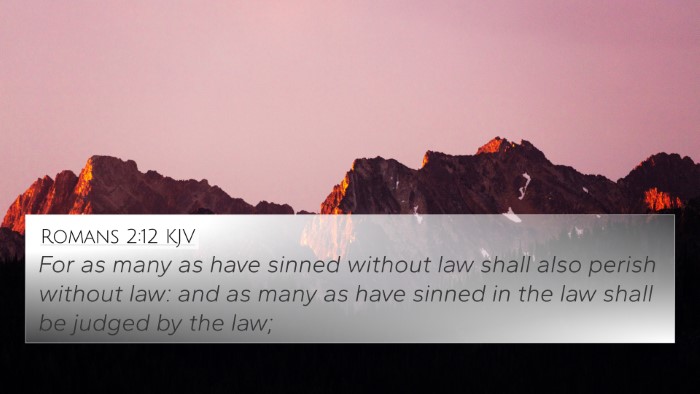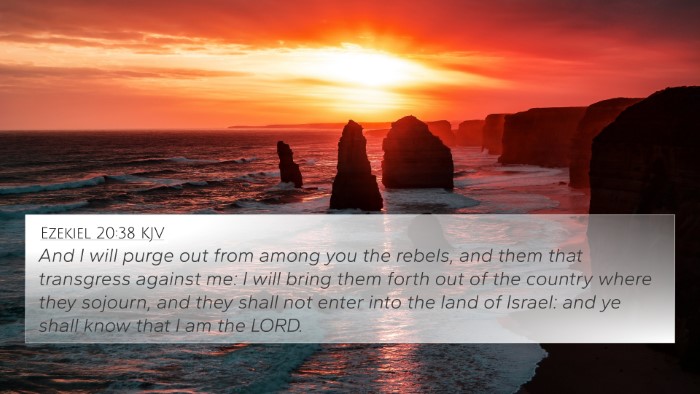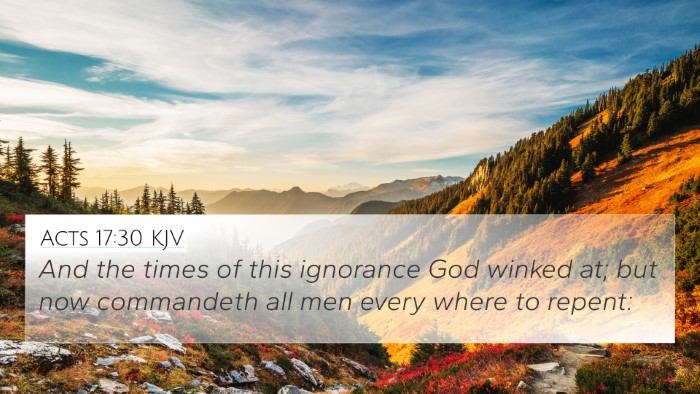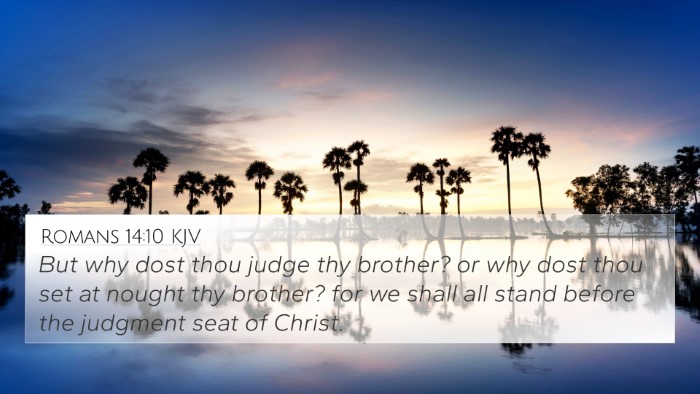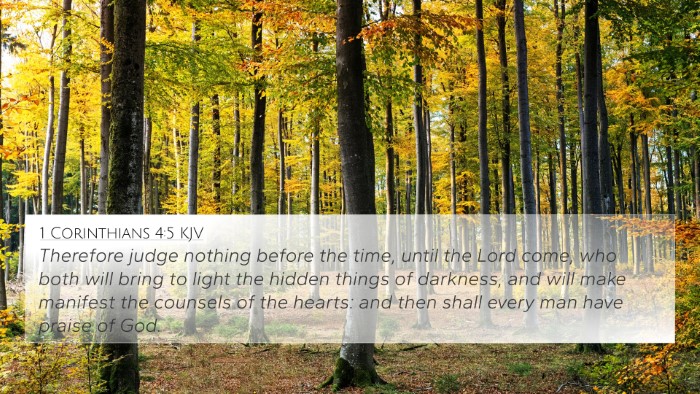Understanding Matthew 25:32
In Matthew 25:32, we see a profound moment in the eschatological teachings of Jesus. The verse states:
"And all the nations will be gathered before Him; and He will separate them one from another, as a
shepherd separates his sheep from the goats." This imagery of separation serves as a critical
thematic element, showcasing the divine judgment that is central to Christian doctrine.
Summary and Insights from Commentaries
The verse emphasizes divine authority and the ultimate accountability of all nations before God.
This judgment is akin to the role of a shepherd tending to his flock, highlighting both care and
authority in the hands of Christ. Below is a summary of insights derived from esteemed public domain commentaries.
Matthew Henry's Commentary
Matthew Henry emphasizes the completeness of Christ's authority and the significance of the
gathering of all nations. According to Henry, this verse illustrates:
- Universal Judgment: All nations will face His judgment, emphasizing that no one is exempt.
- Shepherd Imagery: Just as a shepherd knows each sheep, so does Christ know each individual.
- Separation of Righteous and Wicked: The act of separating sheep from goats symbolizes the distinction between the saved and the unsaved.
Albert Barnes' Notes
Albert Barnes provides further insights into the implications of this judgment. He posits that:
- Cultural Context: The separation indicates not just a physical parting but also a moral and spiritual distinction.
- Hope and Warning: While this serves as a warning to the wicked, it also offers hope to the righteous.
- Complete Accountability: All individuals will be held accountable for their deeds.
Adam Clarke's Commentary
Adam Clarke highlights the pastoral aspect of Jesus' metaphor. His key points include:
- Sheep and Goats: The sheep represent the righteous who hear the voice of Christ, while the goats symbolize the unrighteous.
- Judgment as a Necessary Divine Action: Clarke reflects on the necessity of judgment as part of divine justice.
- Implication for Believers: There is a call to live righteously and to emulate the characteristics of the "sheep."
Cross References and Thematic Connections
Matthew 25:32 connects with various other scriptures that enhance our understanding of judgment,
righteousness, and the role of Christ. Here are some relevant cross-references:
- Matthew 13:30: "Let both grow together until the harvest..." - illustrates the eventual separation of the righteous and unrighteous.
- John 10:14-16: "I am the good shepherd; and I know my sheep..." - Christ's relationship with His followers.
- Revelation 20:12: "...the dead were judged according to their works..." - reinforces the theme of accountability.
- 2 Corinthians 5:10: "For we must all appear before the judgment seat of Christ..." - emphasizes that all will stand before Him.
- Psalm 1:5: "Therefore the wicked will not stand in the judgment..." - affirms the separation at judgment.
- Ezekiel 34:17-22: A prophecy about separation and distinction among the flock.
- Matthew 7:21-23: "Not everyone who says to me, 'Lord, Lord,' will enter the kingdom of heaven..." - warns of self-deceived individuals.
- Acts 10:42: "He commanded us to preach to the people, and to testify that it is He who was ordained by God to be Judge of the living and the dead." - affirming Christ's role as judge.
- Romans 14:10: "...for we shall all stand before the judgment seat of Christ." - reiterates universal accountability.
- Luke 12:47-48: "And that servant who knew his master's will..." - discusses the degree of punishment based on knowledge and accountability.
Final Reflections
Matthew 25:32 is a powerful reminder that Jesus as the judge will separate the righteous from the wicked.
The imagery of a shepherd serves to underline His care and concern for each individual while simultaneously
affirming His authority in executing divine judgment. Understanding this verse requires careful meditation
and an examination of the broader scriptural context, particularly through the lens of cross-referencing and
thematic explorations of related scriptures.
